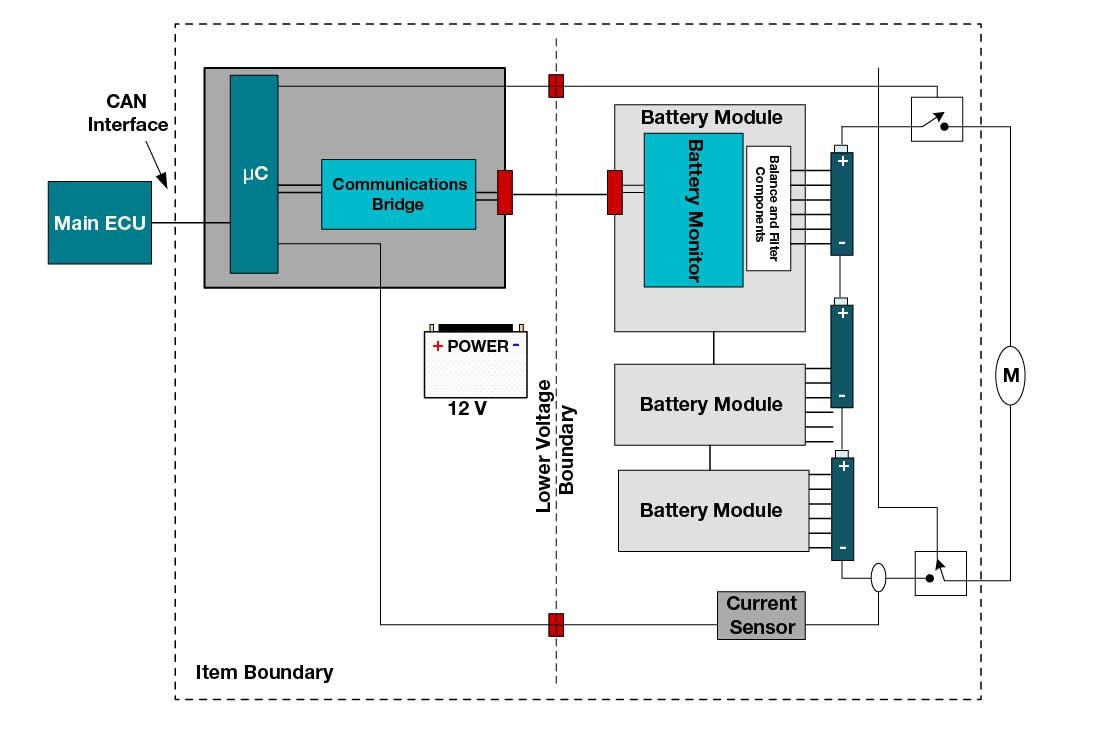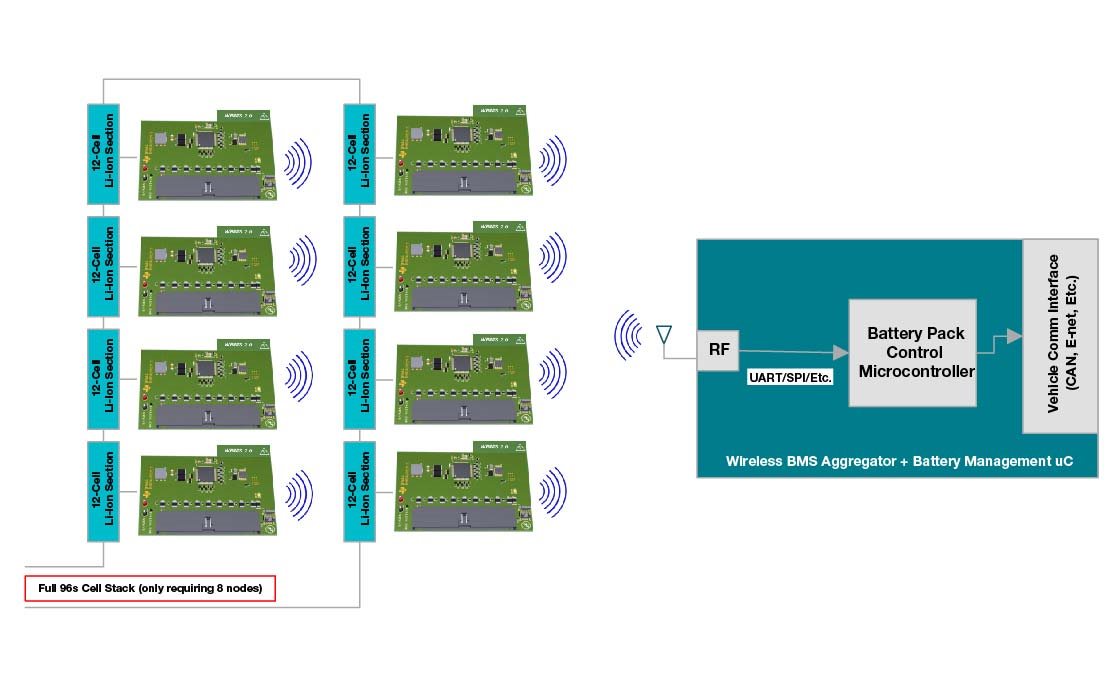SSZT205 January 2021 BQ79616-Q1 , CC2662R-Q1
The year 2019 marked more than 2 million sales of electric vehicles(EVs), and reports indicate sales may reach as high as 8 million annually in the next few years, with China leading the way.
Battery management systems (BMS) are an essential component of EVs, with their efficiency, longevity and performance of paramount importance. To achieve these advantages, each cell in a battery pack monitors and reports data regarding its temperature, voltage and current through either an isolated Controller Area Network bus, differential daisy-chain communication or other proprietary solutions.
Figure 1 illustrates a typical BMS, comprising a microcontroller (MCU) and its support circuits, isolations between the low- and high-voltage sides, battery cells, battery monitor modules, and a current sensor. The M in Figure 1 indicates the EV’s engine. Battery cell information, temperature and voltage are reported through a wired interface, indicated on the figure as red and blue twisted lines between the battery modules.
 Figure 1 A Typical Wired BMS
Figure 1 A Typical Wired BMSProviding connections to the cells and isolation for the wired solutions is difficult and costly. There is also a chance that the wires could break in the event of an accident, necessitating replacement of the whole battery pack. These issues have caused automakers and BMS solution providers to look for wireless communication solutions instead.
A wireless solution, in which the battery modules convey battery cell information to the BMS MCU directly, resolves the challenges associated with wired communications. Adoption of a wireless solution, however, requires performance comparable to that of wired system. One such critical performance metric is network availability; for wireless BMS, we call this wireless BMS availability.
The critical challenge for connectivity in a wireless BMS is the availability of the 2.4-GHz wireless network. The network must be readily available so that drivers can start their EV and manage the battery in real time – this is where the reliability and performance of TI’s proprietary wireless protocol is important. The idea is that the network connects all of the necessary components with the push of a button, every time, sending drivers on their way.
| Comply with ISO 26262 ASIL D in your wireless BMS design | |

|
 Read the white paper
Read the white paper
|
Wireless BMS availability is measured as the availability of data from the wireless connectivity devices and the wireless main node at any particular time. In other words, wireless BMS availability is the average percentage of time during which a wireless BMS network is performing data gathering or controlling battery health-monitoring devices. The wireless BMS network shown in Figure 2 illustrates the concept.
The network consists of one main controller connected to a battery pack MCU and eight wireless devices. The SimpleLink™ 2.4-GHz CC2662R-Q1 wireless MCU evaluation module comprises the wireless part of the main node and the wireless devices. Each wireless device has a companion battery monitor and balancer, in this case the BQ79616-Q1. The BQ79616-Q1 measures the voltage and temperature of the battery cells in the BMS and reports state-of-charge and state-of-health data to the BMS MCU through the main node controller.
 Figure 2 Wireless BMS System Connecting Eight Wireless Devices
Figure 2 Wireless BMS System Connecting Eight Wireless DevicesIf a packet transmission is in error, which means that the device will not be able to properly interpret the information from any wireless node or the wireless main node during a time interval, then the network is considered not available during this time interval.
Data must be processed accurately and quickly because a lack of accurate information could cause a malfunction in the battery and result in a hazardous situation. That is why safety and reliability in wireless BMS is paramount.
For a 10-node network, TI’s wireless BMS protocol s can achieve a packet error rate of 10-7 or better. This implies that the data for any node will not be available for 100 ms out of 52.222 hours of wireless BMS operation, and translates to a wireless device uptime of >99.9999%. Since each wireless device is independent, you can infer that the wireless BMS network availability is also >99.999%.
Through our proprietary wireless protocol and the CC2662R-Q1 MCU, our wireless BMS solution enables secure data communication with an unparalleled availability of >99.999%, and enables the use of wireless BMSs in challenging battery enclosure environments. These environments can be challenging because they are located within a confined space, with significant attenuation and reflection of signals bouncing off of the metallic boards before reaching their destination.
Through our advanced wireless protocol with the industry’s best network availability, our wireless BMS solution demonstrates how vehicle designers can remove heavy, expensive, maintenance-prone cabling and improve the reliability and efficiency of EVs worldwide.
You can jump-start your design by downloading the SimpleLink wireless BMS software development kit and purchasing the SimpleLink wireless BMS MCU.